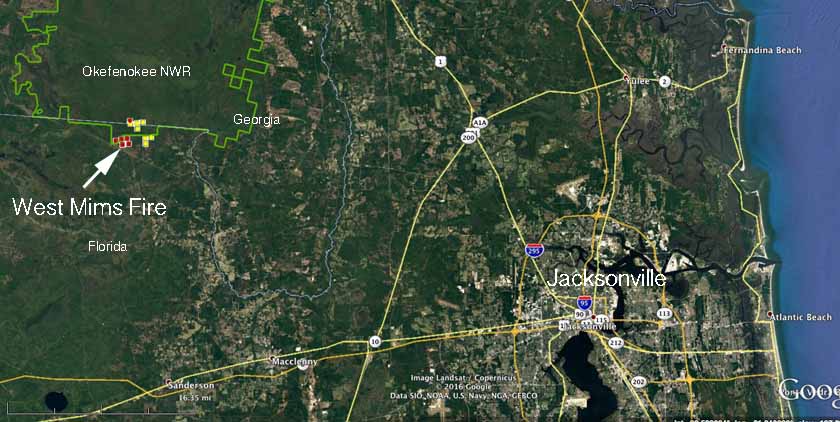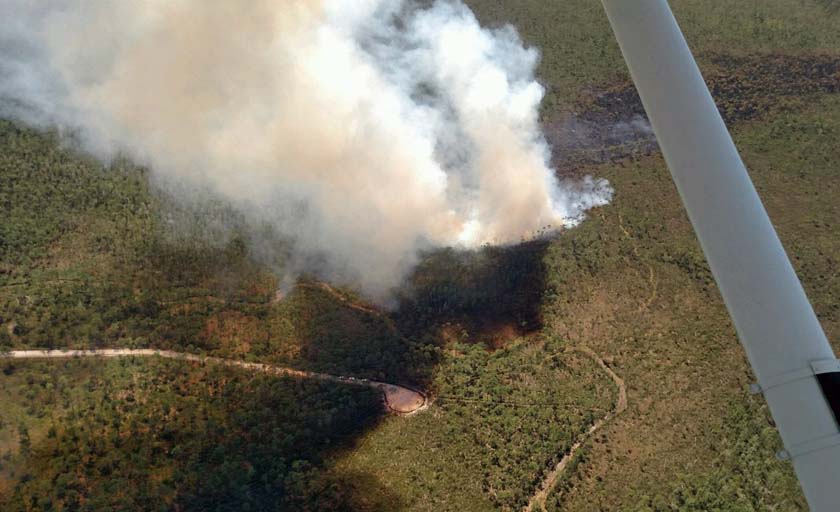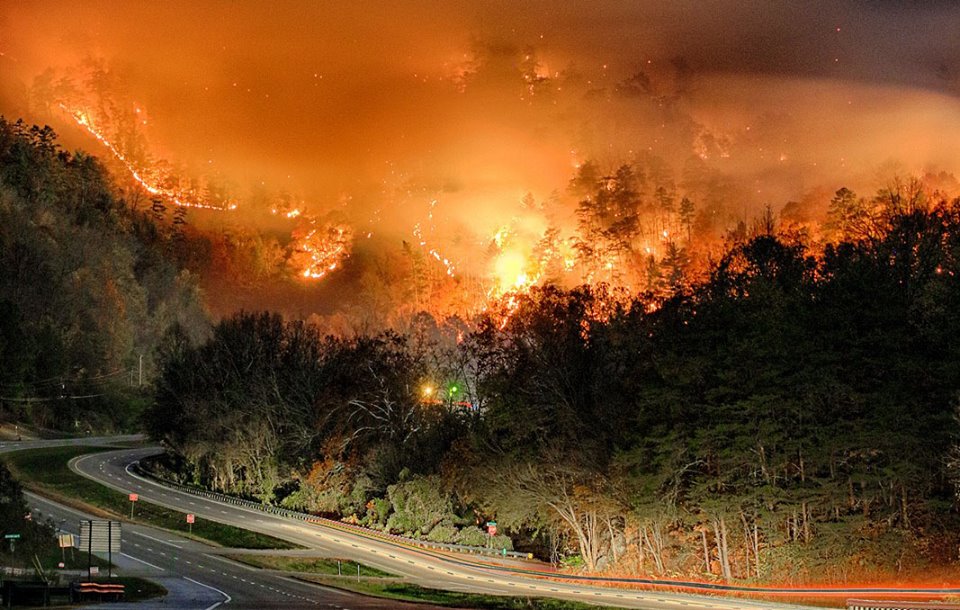
(Originally published at 5:20 p.m. EDT April 10, 2017.)
Since the West Mims Fire started from a lightning strike on April 6 it has burned about 3,800 acres, growing substantially on Sunday and Monday.
The fire is 16 miles west of St. George, Georgia at the southern end of the Okefenokee National Wildlife Refuge and on private land just north of Florida Highway 2 on both sides of the Georgia/Florida state line.
Most fires in the Refuge, which is a Wilderness Area, are allowed to burn with little interference from humans, but with it on private land outside the Refuge firefighters are taking action to stop the spread.
Personnel with the Georgia Forestry Commission and Florida Forest Service are working the fire along with federal firefighters from the Refuge.
Below is an excerpt from an April 9 press release, but with the rapid growth of the fire on the 9th and 10th, it appears that fire managers have stepped up their suppression activity since the reported April 8 meeting:
…A meeting was held the morning of April 8 to discuss strategy. Representatives were present from the U.S. Fish and Wildlife Service, Georgia Forestry Commission, U.S. Forest Service, Florida Forest Service, Georgia Department of Natural Resources, and Baker County Emergency Management. Monitoring of the West Mims Fire will continue over the next 48 hours. Personnel with the Florida Forest Service at John M. Bethea State Forest will refresh fire lines on the southeast corner off Perimeter Road.
There will be a follow-up meeting on Friday, April 14 of the primary responders to re-evaluate the status of the wildfire and to discuss future strategy of attack.






